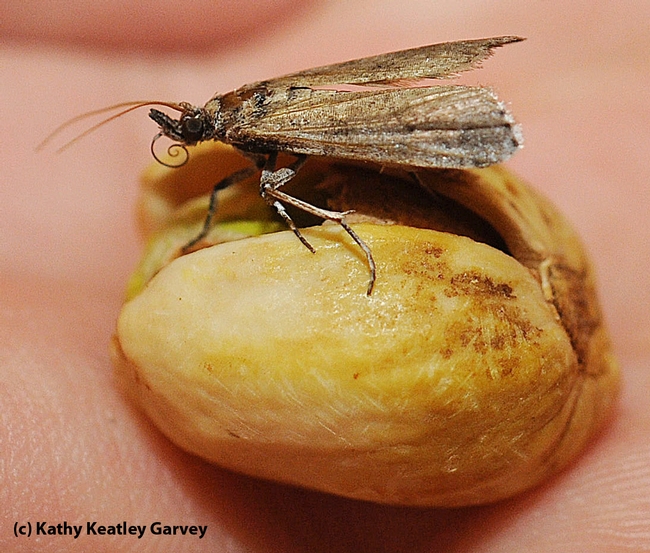- Author: Kathy Keatley Garvey

UC Davis entomology graduate student Kevin Rayne Cloonan not only won a coveted award for his research presentation at the 60th meeting of the Entomological Society of America in Knoxville, Tenn., but it may prove to be a boon to California almond growers.
Cloonan, who is studying for his master’s degree with chemical ecologist Walter Leal, professor of entomology, won a second-place award for his insect repellent research on the navel orangeworm (NOW), a major pest of California’s almond industry.
His talk was part of the 10-minute graduate student presentations.
Cloonan presented his paper on “Potential Oviposition Repellent for the Navel Orangeworm (Amyelois transitella) in Almond Orchards of Central California.” For his research, he tested 20 broad spectrum insect repellents as potential oviposition repellents. Bedoukian Research Inc. developed the repellents.
Cloonan's work involved electrophysiological recordings, laboratory behavioral assays, and a field behavioral assay. He first used electroantennogram (EAG) assays to identify which of those 20 repellents the female antennae could detect. Of the 20 repellents, three showed significant EAG responses, he said.
In testing the oviposition repellency under laboratory conditions with laboratory populations, he found that two of the three repellents showed significantly reduced oviposition; they were then tested with field populations in almond orchards in Arbuckle.
“One especially looks very promising,” said Cloonan, adding “I couldn’t have done this research without the support and help of Dr. Leal and everyone in the Leal lab.”
Cloonan has been asked to present a poster at the Almond Board of California conference, to be held Dec. 11-13 at the Sacramento Convention Center.
At the ESA meeting, Cloonan’s presentation was one of 14 vying for top honors in the Plant-Insect Ecosytems (P-IE) Section. The P-IE Section includes behavioral, ecological, and evolutionary relationships in natural landscapes, as well as integrated pest management (IPM) in agriculture, horticulture, forests, and lawn and garden. The section also deals with aspects of crop protection, host-plant response, plant pathology/vectors, pollination, biological control, microbial control, and others.
Cloonan, who plans to pursue his doctorate in entomology, is a graduate of the University of Idaho, with a bachelor's degree in entomology.
Almonds are big business in California and getting bigger.
The National Agricultural Statistics Service forecasts California’s 2012 almond crop at a record-breaking 2.10 billion meat pounds, valued at approximately $3 billion. Eighty-percent of the global supply of almonds is grown in California, and about 70 percent of California’s crop is marketed overseas.
Honey bees from all over the country are trucked to California to pollinate the state’s 780,000 acres of almonds, which begin blooming in mid-February, around Valentine's Day. Two bee colonies are required to pollinate each acre--and that's a lot of bees!



